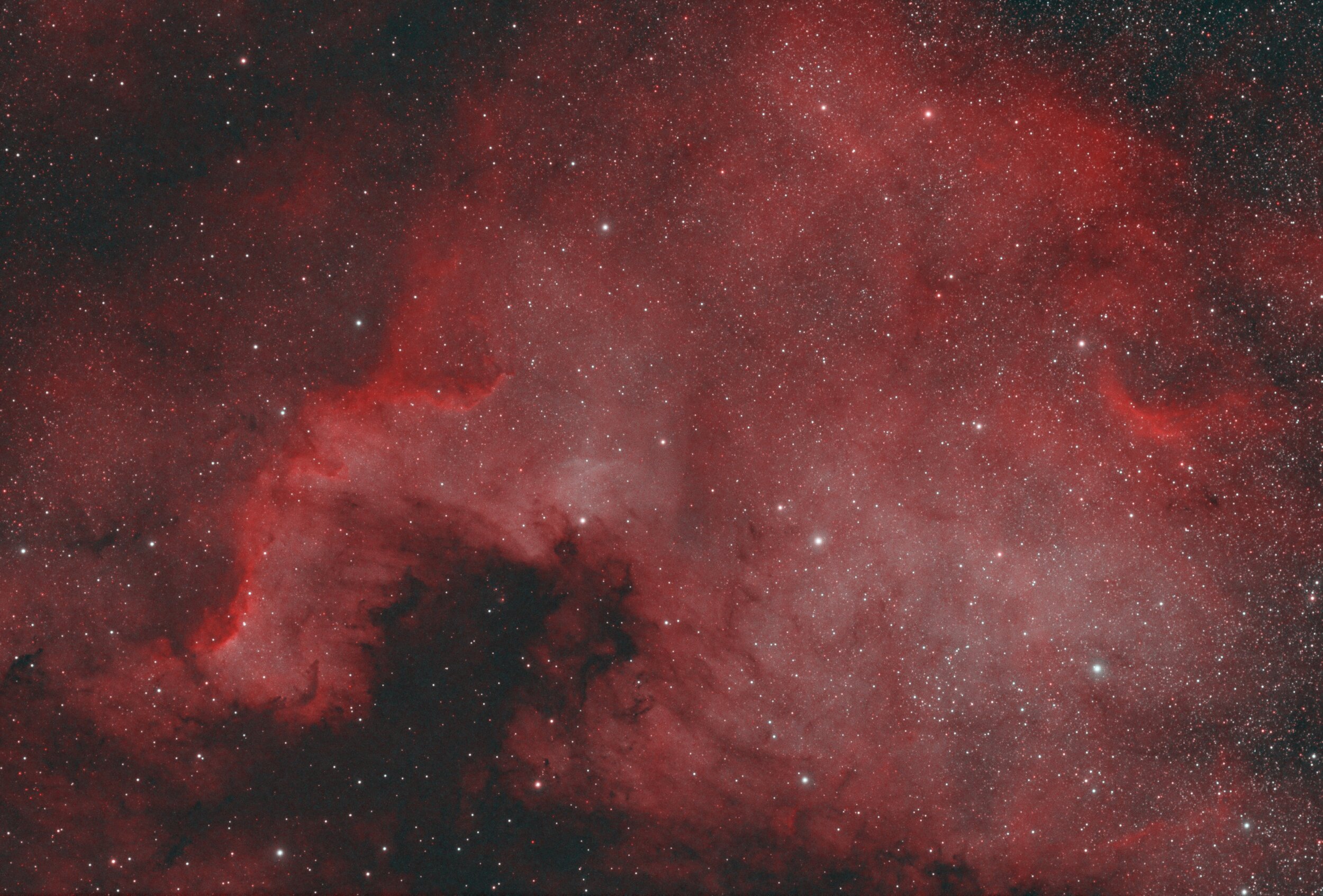While waiting for the adapter to connect up my ASI6200MM-P camera and filter wheel, I've been experimenting with the ZWO Duo-band filter that ZWO gave away free with purchase of the ASI2600MC-P (during product launch) when I got it early in the year. According to the ZWO website the HA cutoff is 15nm, and OIII cutoff is 35nm.
My first image was the Pelican nebula, which was cut short by clouds. But at two hours, I thought it was decent enough, if a bit lacking in fine detail.
My first image with the ZWO Duo-Band filter. Only 2 hours! This looks pretty good for a bortle 7-8 zone.
My second night experimenting with the filter, I managed a full night, and only had to wait for NGC7000 to come above the clouds.
In processing this originally, the image right off the camera is saturated in Hydrogen Alpha, and looks very red.
Close to 5 hours using the ZWO Duo-Band filter. This is what your image will look like if processed without any enhancement, right off the camera.
I put the image into PixInsight, and extracted the RGB channels into their individual channels. In the blue and green channels I saw the faint OIII signal. Then using pixel math and Starnet++, I removed the stars and combined both green and blue channels into a single channel to represent OIII. I then stretched and processed the single OIII image adding back the stars at the end. I then recombined as HOO using pixel math to put back the new OIII synthetic channel for blue and green with the existing red channel for the final image.
The final processed image with enhanced OIII channel. Looks pretty good! This was only 4.7 hours of integration time.
One thing to note, this image is noisier than it would be if this was shot with a mono camera, and you lose some amount of fine detail around the Cygnus wall. I've shot this nebula before with mono, and you can see that image here where I shot it on the ASI1600MM-P with a similar speed and sized refractor.
A mono only version of the same area shot on a true HA and OIII filter and the ZWO ASI1600MM-P camera. This was processed a little differently to present a different color combination, but the details are clearly better here, both from shooting mono, and from more integration time (close to 15 hours).
There's a huge difference in the amount of detail. However, this new integration is only around 4-5 hours total, and looks quite good despite that low integration time. My previous attempt with the ASI1600MM-P had close to 15 hours integration, and while it was also an HOO image, I processed the OO channels with some HA combined to produce (to me) a more pleasing color pallet.
Both the final processed image with enhanced OIII, and the final integrated image without OIII processing show the difference in what you would get right off your camera, and with taking the time to modify the green and blue channels to enhance the OIII.









